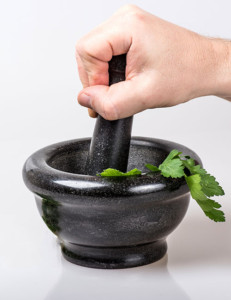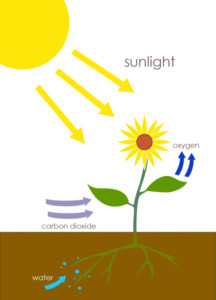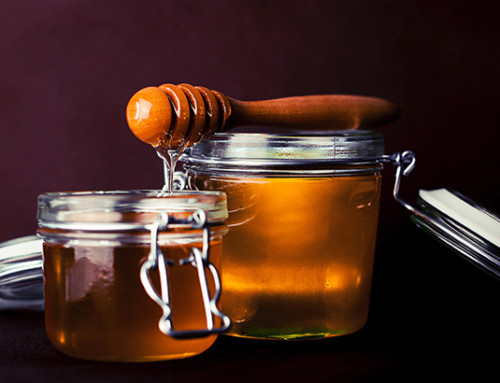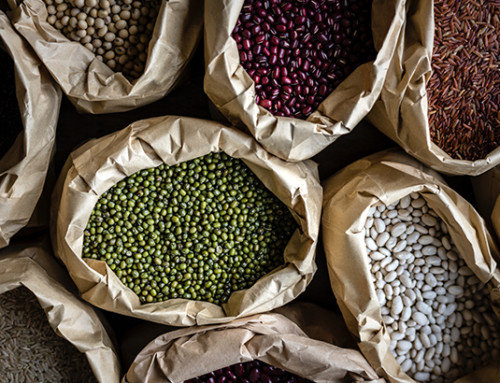With the fall season now in full swing, we thought it would be fun to do a fall-related science activity: leaf chromatography! As we explained in our previous post, Easy Chromatography Paper Experiment, we do sell chromatography paper, which is used to separate out a mixture of chemicals. In this activity, you’ll just need a few household items and some perfect fall weather to get going!
Materials
For this activity, you will need glasses or jars (whatever you have on hand) for each leaf color you collect. You will also need a mortar and pestle or a bowl and a spoon, rubbing alcohol, chromatography paper, and of course, leaves! The goal is to find different colored leaves to make this activity more interesting, so get out there and see what you can find.
Instructions
 Once you have collected all your colorful leaves, sort them out by color. Starting with one color, tear up a leaf, and using whatever method you have one hand, crush the leaf into small pieces to release the water. Place the crushed leaf in one of your glasses, and label the glass with what color the leaf was. Wipe any remnants out of your leaf crusher, and repeat the process with all the leaf colors you collected.
Once you have collected all your colorful leaves, sort them out by color. Starting with one color, tear up a leaf, and using whatever method you have one hand, crush the leaf into small pieces to release the water. Place the crushed leaf in one of your glasses, and label the glass with what color the leaf was. Wipe any remnants out of your leaf crusher, and repeat the process with all the leaf colors you collected.
Next, pour a small amount of rubbing alcohol into each glass until the crushed leaves are fully immersed. Now you have a couple of options depending on your time frame. You can either cover the glasses with plastic wrap and let the leaves soak overnight, or you can place the glasses in a bowl of hot water. The hot water will warm up the alcohol, speeding up the process. Note: Do not pour hot water in the glasses. You just want to warm the rubbing alcohol. With this method, you might expect to wait 30 minutes to an hour to see that the pigments from the leaves has been extracted and mixed with the alcohol.
Now, you’ll need your chromatography paper. Make sure you have strips long enough that they won’t just fall into the glasses. Place one end of the chromatography paper into the glass, so it is immersed in the leaf solution. If your strips are long enough, drape the other end over the edge of the glass, so it doesn’t fall in. If they’re not long enough, just tape them up to the edge of the glass.
Once again, you’ll need to wait a little while for the chromatography paper to take up the dyes. This is a great time to guess what you think will happen. What colors do you think will separate out from each leaf? What leaves do you think will have the most dramatic results?
After a couple of hours, you should have results! The alcohol will carry the pigments from the leaves up the chromatography paper at different rates, showing their separation. Some colors will have more obvious separation than others. Were the results what you expected? Were you surprised by any of the results? What do you think is in the leaves that produced these results?
Background
 Plants use sunlight to synthesize foods from carbon dioxide and water for energy through a process called photosynthesis. This process involves the green pigment, chlorophyll. There are thr
Plants use sunlight to synthesize foods from carbon dioxide and water for energy through a process called photosynthesis. This process involves the green pigment, chlorophyll. There are thr
ee types of chlorophyll found in plants, chlorophyll a, chlorophyll b and chlorophyll c. They are different in their structures and where they are found. Chlorophyll a is found in all plants, algae and cyanobacteria, but b and c are not.
There are also other pigments in plants, such as carotenoids (orange), xanthophylls (yellow), anthocyanins (reds and purples), and betalains (yellow to red). While plants are growing in the spring and summer, the leaves contain more chlorophyll than any other pigment, which is why the leaves are usually green.
However, in the fall as growing seasons comes to an end, the chlorophyll begins to break down, and the other pigments become more noticeable. This is why we see leaves changing color in the fall before they drop to the ground.
Based on this information, conclude your experiment by identifying what pigments were more or less soluble than others.







Leave A Comment